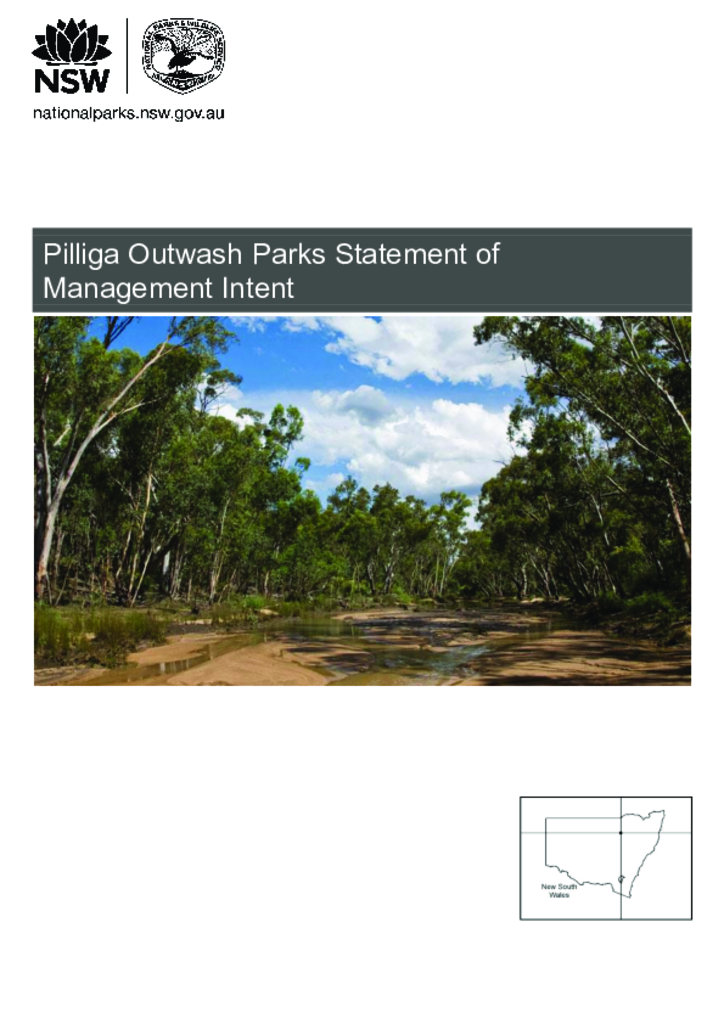Pilliga Outwash Parks Statement of Management Intent
The Pilliga Outwash parks retain an important place in the network of vegetated, conserved land in the Brigalow Belt South Bioregion. The parks are located on the western slopes of the Great Dividing Range in northern inland New South Wales, about 50 kilometres south-west of Narrabri. They include:
- Pilliga National Park
- Pilliga State Conservation Area
- Pilliga West National Park
- Pilliga West State Conservation Area
- Merriwindi State Conservation Area.
These parks were formed in 2005 following the Brigalow Belt South and Nandewar western regional assessment processes. The parks form part of the largest surviving woodland remnant on the inland western slopes, known as the Pilliga Forest. The total area of these parks is 91,171 hectares.
The Pilliga Outwash parks are part of the traditional lands of the Gamilaroi People (also known as Gomeroi and Gamilaraay) and represent a significant Aboriginal cultural landscape. The most common Aboriginal sites recorded in the parks are modified trees and artefacts, and there is a high likelihood additional unrecorded sites are present. The parks also contain shared heritage sites, including sections of the Pilliga Dog-Proof Fence, which dates from the early 1880s and is of state heritage significance.
The parks protect a representative sample of the diverse plants and animals of the Brigalow Belt South Bioregion. They protect 5 threatened ecological communities, including the Pilliga Outwash Ephemeral Wetlands, 19 threatened plant species and 31 threatened animal species.
This statement of management intent contains actions to protect the natural and cultural environment, including protection of threatened species and communities, control of pest plants and animals, and fire management to protect life, property and biodiversity. It also invites ongoing involvement by Aboriginal people in managing the parks and allows for nature-based visitor experiences. Lastly, the statement enables construction of new infrastructure to support a Reintroduction of Locally Extinct Mammals project in Pilliga State Conservation Area.
A draft statement of management intent for the Pilliga Outwash parks was exhibited between 7 July and 7 August 2017. The 4 submissions received were carefully considered before finalising this statement of management intent. This statement of management intent replaces the 3 statements of intent prepared for the parks within the Pilliga Outwash in 2014 and will guide the management of the parks until a plan of management is prepared and adopted in accordance with the National Parks and Wildlife Act 1974.
A public consultation on the reintroduction of locally extinct mammals was also held in 2017. The Reintroduction of Locally Extinct Mammals Project under the Saving our Species Program began in 2017 in the park. In addition to reintroducing small mammals, which were once present in the western New South Wales landscape and act as ecosystem engineers, the project is expected to benefit all biodiversity in the park through intensified pest control.
See also Pilliga State Conservation Area Review of Environmental Factors for the Reintroduction of Locally Extinct Mammals (2017).
